We had another GPS adventure on the way to our next site. The machine routed us down a road that once led to Ft. Lincoln, but that had been closed for some time. Again Mick had to turn the bus on a narrow roadway. I believe this time our guide David called for instructions. We arrived at Ft. Lincoln too late for our appointed tour time, but we were able to negotiate with the Park Service to see everything we were scheduled to see.
The GPS again did backflips on our return to Bismarck, but we arrived safely after touring some unexpected parts of the area.
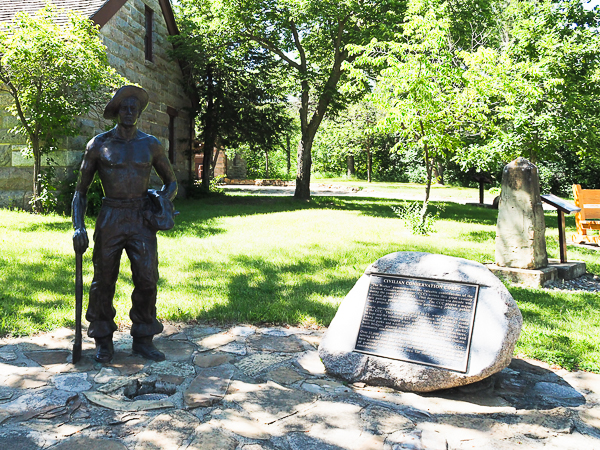
Fort Abraham Lincoln State Park comprises the Civilian Conservatoin Corps 1930s reconstructions of a post-Civil-War cavalry post and a a Mandan village.
This memorial to "the worker" was located at the interpretive center. There are 78 such statues located at CCC sites throughout the US. This one is #39 and was dedicated in 2007.
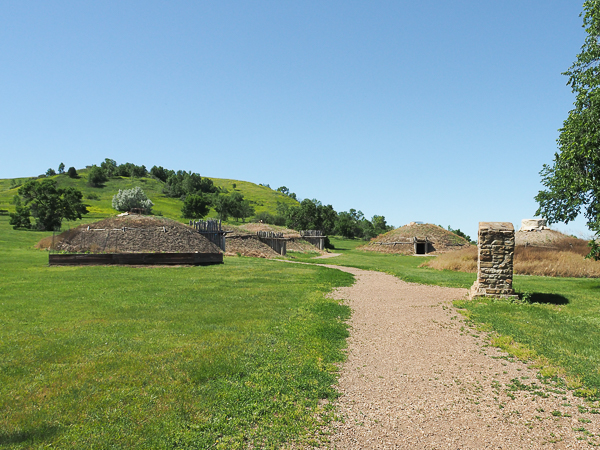
Prior to the time of Lewis & Clark, a Mandan village called On-a-Slant, because of its topography sloping down to the river, existed here. It may have had as many as 1,000 residents before being decimated by a smallpox epidemic in 1781.
Five earth lodges have been reconstructed and the Park Service conducts tours.
We were admonished to remain on the paths because there are graves and other archeological remains at the site.
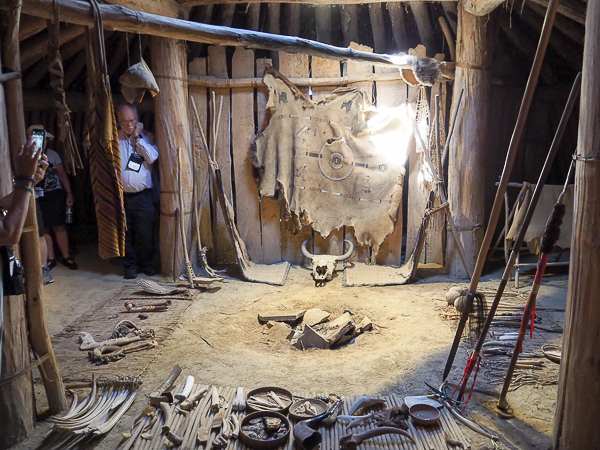
One of the lodges has been reconstructed for interpretation. I am sorry that I can't remember all that we were told, but the construction was very functional for the needs of the people and the climate in which they lived.
The main thing I remember is that the Mandans were matrilineal and the women owned the lodges. If a woman disagreed with her husband, she took his belongings and dumped them outside the lodge and that was that.
There is more about the tribe and its customs at the "Mandan" link above.
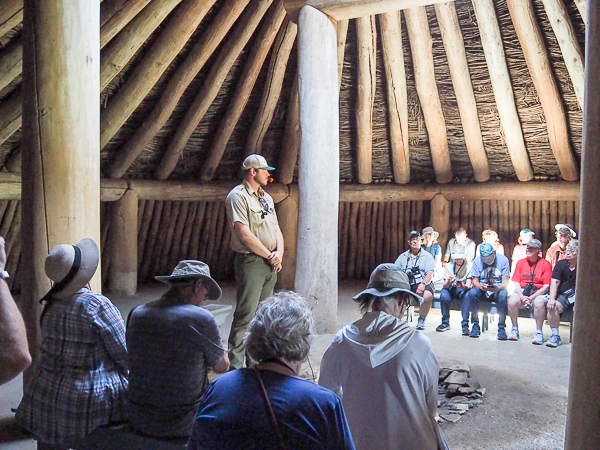
The Council Lodge was larger than any of the residential lodges. It was restricted to the men and was where questions of policy, war, and alliances were debated.
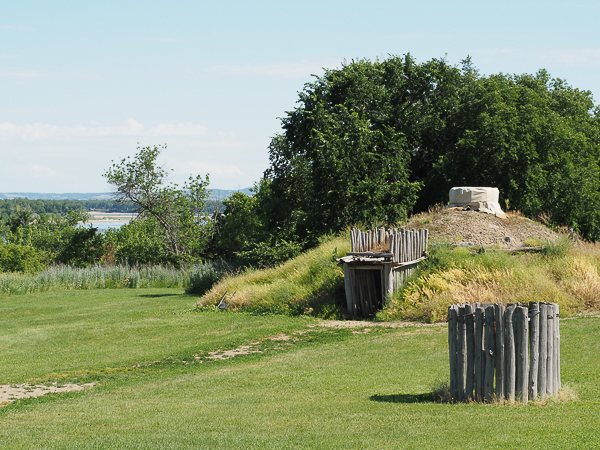
The reconstructed lodges are located around a central plaza overlooking the river.
I have forgotten whether the stand-alone construction was a shrine, a well, or what.
The plastic covering of the smoke hole in the lodge is to prevent water intrusion.
We were told so much about the Native American tribes and relationships that I just can't remember. For example, our European image of all the plains tribes living in tepees and following the buffalo is woefully incomplete. Most of the tribes were agricultural and settled rather than nomadic, although they did make seasonal hunting expeditions. Also some of the iconic plains tribes such as the Lakota were relative newcomers to the area. The settled tribes succumbed more readily to the European diseases and became vulnerable to attack by the nomadic tribes whose scattered culture protected them somewhat from devastating epidemics.
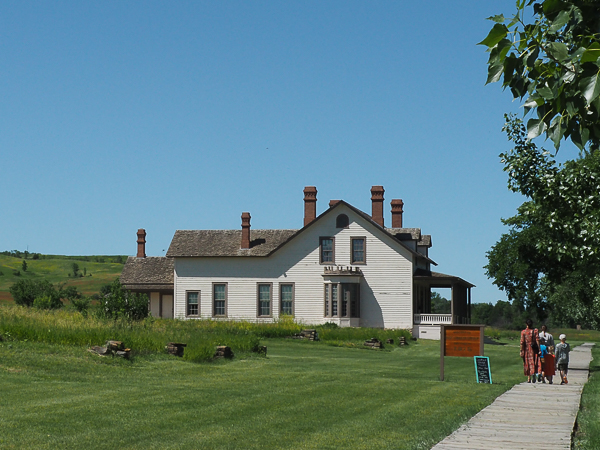
The Custer House is a replica of the one occupied by Lt. Col. George Armstrong Custer and his wife Libbie from 1873 until Custer's death at Little Big Horn.
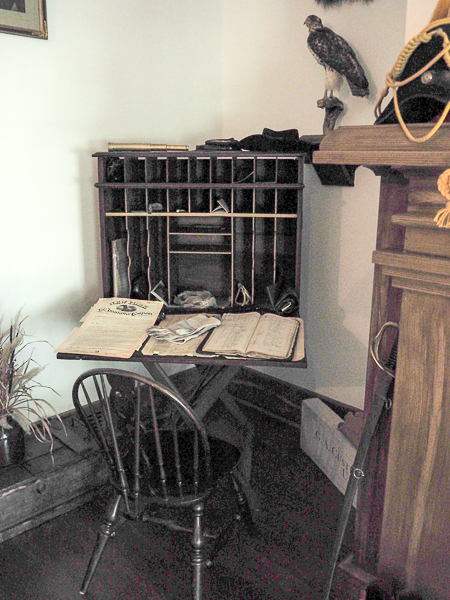
Custer had his own campaign desk that was somewhat more elaborate that that used by Lewis & Clark. He used it at home as well as on the march.

The hill behind the Mandan village is visible from the back porch of the house.
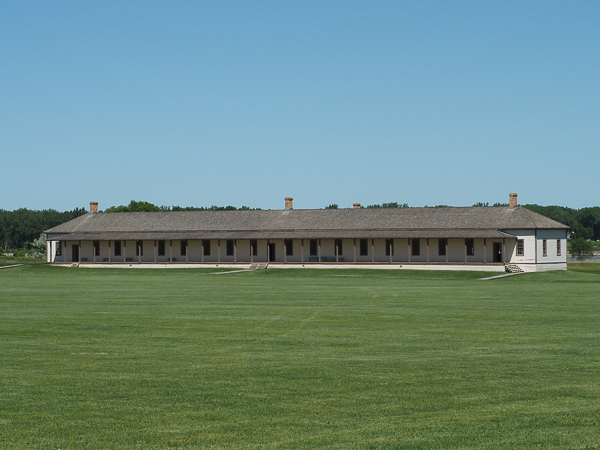
One of the barracks and a stable block have been reconstructed. I believe this may be the stable block, but our time crunch didn't allow me to investigate further.
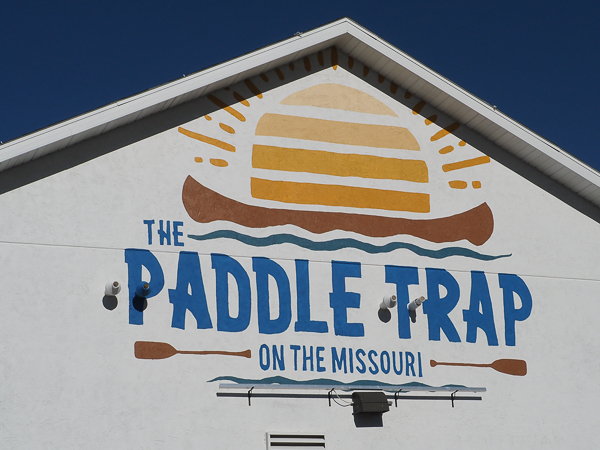
After our adventures of the day, we belatedly arrived at our dinner site. The food was decent and the site overlooking the Missouri River was super.
Many of our number elected to grab seats on the porch right over the river. Even though we stayed inside, we could see the pleasure boats traveling up and down the river.
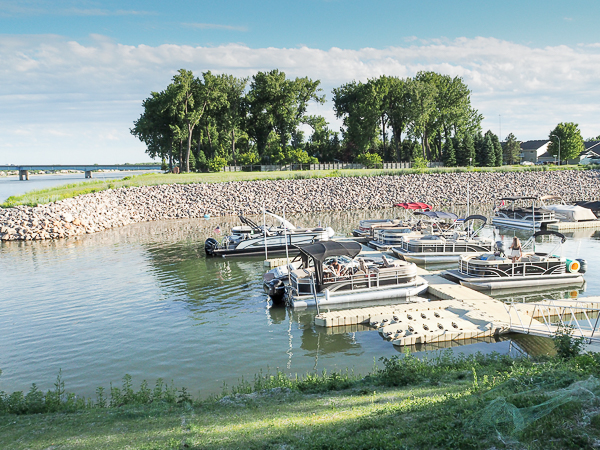
At least some of those boats were bound for the marina attached to the restaurant. Anyone could come in and tie up for a meal. It was very relaxed.
There is no longer much in the way of commercial traffic on the Missouri at Bismarck, but there is plenty of recreational use from pontoon boats to cruisers to speed boats to jet-skis. I didn't see any water skiers - it may be too dangerous with sandbars, snags, and such.
Click your "back" button to return to the previous page or click for our picture album.